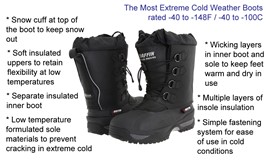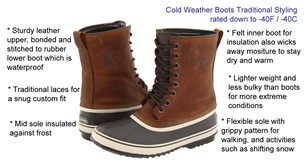What to Pack for a Winter Trip in Lapland & Iceland
- Travel By Bailey - Bailey Marquis

- Jan 28, 2022
- 8 min read
Updated: Jul 12, 2022
If you're visiting Lapland or Iceland in the winter, you need to prepare in advance and bring the correct gear.
For my hosted vacations to Finland and Iceland this year, I want to make sure my travelers are coming prepared. It is important to have your gear ready in advance! Most of these items need to be shipped to you if you do not live in a cold weather climate, so give yourself time to return and reorder if things don’t fit. We are going to be above the Arctic Circle, so if you come unprepared there won’t be time or places to buy the correct gear after we arrive – you want to come prepared! You may also want to bookmark this page and reference it later.
How much luggage can I bring?
Because of the size of the tour vehicles, everyone is limited to 1 large bag, 1 carry-on sized bag, and 1 personal item.
IMPORTANT! Differences in Packing List for Iceland.
Travelers going to Iceland, please pack windproof clothing. The wind has the potential to be the worst weather factor during your visit. Because of this, you need to come prepared with gear made to be wind/waterproof.
I had these pants recommended to be my someone who visited Iceland in the winter before. Click each picture to find on Amazon.
What to Wear in Lapland & Iceland

In March, Rovaniemi, considered the "Home of Santa" and gateway to Finnish Lapland, has an average temperature between 14 and 32 degrees Fahrenheit. Further north in Luosto, Finland, average temperatures range from 6 and 24 degrees Fahrenheit in March.
In Iceland, Reykjavik has an average temperature range of 29 and 39 degrees Fahrenheit during March. Iceland has a more humid climate, meaning that the cold feels like it will seep into your bones. Average winds in Iceland in March are about 13.5 miles per hour.
Footwear
In terms of footwear, wellies/gum boots/rubber boots are a definite no-no. They don’t keep feet warm and can become very rigid and dangerously slippery in sub-zero temperatures. The best thing to bring are snow boots. I also recommend bringing a pair of waterproof hiking or walking boots for lighter activity days. A top tip here is to buy some that are a size above your regular foot size so you can fit two toasty pairs of woollen socks on your feet first. Thermal or fleece insoles are very good to add as well. Paired with some ski socks, your feet will stay nice and warm whatever the weather. Merino wool socks are the best, whilst you should avoid cotton socks - cotton contains air pockets and when you perspire these air pockets absorb this moisture which in turn stops providing any insulation. Essentially, cotton makes you colder in cold weather. In fact, cotton anything (underwear, t-shirts etc) is probably a no no.
Boots for Men - click links below for examples of each
Boots for Women - click links below for examples of each
Difference between conditions
Extreme cold and dry conditions – rated by manufacturers for temperatures down to – 148 F / -100 C
Moderate (Less Extreme) conditions – rated by manufacturers for temperatures down to – 40 F / -40 C
Legs

Thermal long underwear/long johns are great for your first layer – make sure these items of clothing are either wool or polyester. You will be wearing these everyday of our trip, so I recommend bringing 2-3 pair so you can have clean layers. A good and economical second layer is jogging bottoms/sweat pants, again, made from polyester. Your top layer should ideally be ski pants and, unsurprisingly, the famous ski brands produce the best ones. Waterproof trousers can work as a cheaper alternative but aren’t really worth it if the temperature gets below -15 degrees (which we aren't ruling out).
Click to buy: Hot Chilly’s Thermal Layers
These base layers are currently ON SALE at Sierra Trading Post
Click here for women
Click here for men
Upper Body

The key here is layers. Like with your legs, a thermal underwear/base layer is essential. Stick with polyester and wool and once again, avoid cotton. A warm fleece shirt is perfect for your second layer ideally underneath a 100% wool jumper (essential). Fleece shirts can be quite cheap to buy so it doesn’t hurt having one with you even if you don’t wear it. Once again be sure to check they are 100% polyester – there are some out there masquerading as ‘fleece’ but which actually contain a cotton mix which should be avoided. Lastly a fleece coat/jacket is perfect for the penultimate layer ideally with a 300 weight/ 300 GSM.
These are good websites to shop for layers that are currently having sales on layers right now:
TIP: just because a sweater or shirt says “wool” in the item title, does not mean that it is 100% wool. Check the specs of each item you are ordering to see the actual material percentages. Many times items will say they are wool and are actually blended 90% acrylic and only 10% wool.
Jacket

THIS IS YOUR MOST IMPORTANT ITEM. Now this is probably the item of clothing you should spend the most on and certainly one that you should look at the better brands for. Your jacket is essentially on the front line of the weather assault and should be able to withstand the coldest weather that Lapland/Iceland can throw at you. Jackets known as ‘Down Parkas’ are definitely the thoroughbreds of the jacket arena here. Unsurprisingly these are the most expensive, but these are the types of jacket used in expeditions to the Arctic. The ‘Down’ aspect of the jacket refers to the insulation made up of goose feathers, quite possibly the best insulation there is. If this isn’t within your budget don’t panic - you can also pick up a down shell jacket or similar insulated jackets for a lot less money. But obviously the cheaper, lesser insulated jacket you go for the less effective the jacket is likely to be.
Tip: Buy one size bigger than your normal size so you can fit layers underneath.
Accessories
It goes without saying that a hat and gloves are more than necessary in Lapland. Having your head or hands uncovered is a simple no no. It is actually worth taking two pairs of gloves - one thinner pair for wearing when you need to take photos whilst outside as well as a bigger pair of gloves or mittens (gloves that have one section for the thumb and one for the other four fingers together) to wear at other times. Mittens will keep your fingers warmer than gloves! Good ski gloves are ideal as they are windproof, especially for my Iceland travelers. If you want to truly upgrade, there are chargeable heated gloves and mittens you can buy for about $100-200 per pair.
Tip: If your hands tend to sweat in gloves, please bring at least 2 pairs. You do not want to wear wet gloves. You can also bring hand and feet warmers!! If you have a Costco or Sam’s membership, you can buy them in bulk or you can order them from Amazon.
Amazon Hand Warmers
As someone who grew up skiing, on the coldest winter days hand warmers were my best friend. I highly recommend bringing some!
Rechargeable Hand Warmers
Disposable Hand Warmers
For your head the most popular type of gear to wear is a fur trapper/deer stalker/Russian style hat with ear flaps. These flaps are a God-send if it is really cold or windy as they act like built-in ear muffs. When it is seriously cold a balaclava can be really useful under a hat but this isn’t essential. Scarves or neck gaiters/snoods are also a great way to keep extra toasty when in Lapland.
Trapper Hats
Men’s Fur Trapper Hat - I ordered this one for my husband!
Women’s Fur Trapper Hat - I ordered this one for me!
Finnish Saunas

Saunas are a big part of the Finland and Lapland experience. You'll find them in most hotels, cottages and even private homes. It is estimated that there could be as many as 2 million saunas in Finland - and for a country of just 5.4 million people that's pretty impressive. So with that in mind it is worth packing at least one bathing suit as the opportunity to try a sauna is guaranteed.
Where to Shop & Save
To buy your gear and clothes, you don't have to shop at the places I have recommended here, but they are a great resource for examples of what to bring. Growing up skiing in northern California, I have found several great outwear websites that have frequent sales on good gear! I also like that these sites have reviews on their products. For example, if someone from northern Alaska or Canada says the jacket they ordered kept them warm and dry in the dead of winter, THAT is the jacket you want to order! The outwear sites I frequently use and have regular sales of 50-70% off and free shipping are below.
Note: for coats and hats, I believe Eddie Bauer has a higher temperature (warmer) rating than similar items ordered from Land's End. This is based on comparing their online reviews. If you want to order your coat from Land's End, then order the "expedition" type jacket, as it is the warmest and offers better protection for the wind.
Cameras in cold conditions

There is nothing worse than when you are in a beautiful place, such as Lapland and Iceland, and your camera is not working as well as it should. The cold can affect cameras more than you may think so follow our guide on how to keep your camera safe and well when in Lapland/Iceland.
Make sure you take a padded bag with you to keep your camera in – all reputable camera shops will sell these if you don’t already have one.
Take extra batteries with you for the duration of your stay. The battery is the main piece of kit in your camera that is affected by the cold. Low temperatures often decrease battery life so bring an extra set just to be safe. Also be sure to turn off any unnecessary features that may be available on the camera that could drain the battery.
Be sure to charge your batteries every night.
Avoid changing the battery or SD card when you’re outside – try and limit this to when you are indoors.
Avoid condensation. Condensation happens when you move from the cold into warm air and vice versa. If possible it is a good idea to try and ease your camera into the changing climatic conditions by leaving it somewhere like a porch or car (if it is safe to do so) so it can have some time to get used to the changing temperatures. Keep your battery inside in the warm though when doing this – just don’t forget to take it with you when you do go out with your camera.
As mentioned earlier take a second pair of thinner gloves with you so you can operate your camera without having to completely bare your digits to the cold.
For Your Cell Phone
For your cell phone, a great product is PHOOZY. It keeps your phone insulated to keep your phone battery charged! This company developed CLIMATEPROOF sleeves for your device. Their patented Chromium Thermal Barrier™, made from NASA technology, helps prevent overheating in the sun and extends battery life in the cold. Because dead phones suck.
If you have questions or need more tips for packing or planning for a cold vacation, please let me know!
























Comments